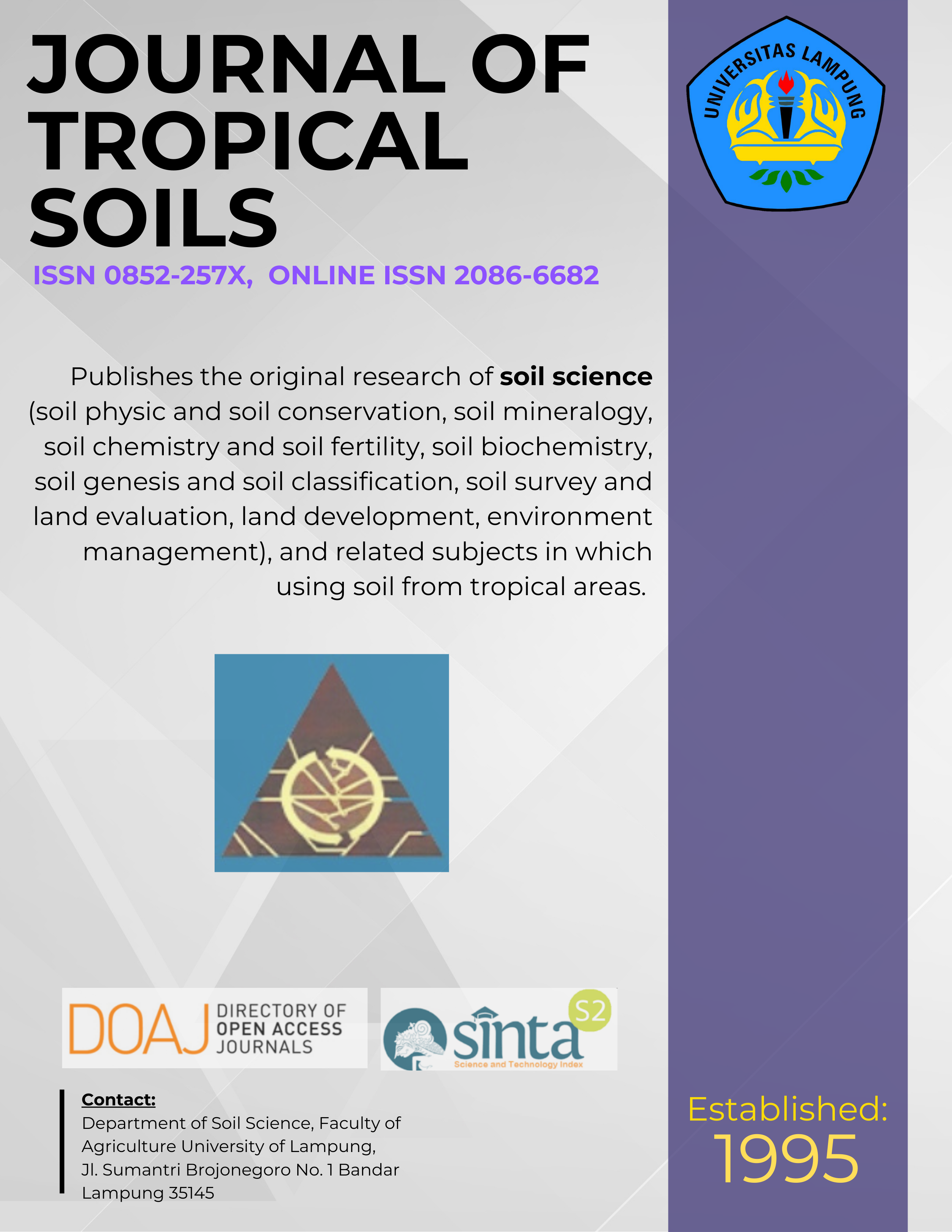Slow- Release Fertilizer Formulation Using Acrylic and Chitosan Coating
Main Article Content
Abstract
The low-efficiency problem in fertilizer application can be overcome by controlling fertilizer solubility, i.e. by rendering the fertilizer to be released gradually; such material is also known as slow-release fertilizer (SRF). This research was aimed to formulate SRF by coating technique using acrylic and chitosan as the coating material, and to evaluate fertilizer resistance to too fast disintegration, and rate of nutrient release method. The results demonstrated that fertilizer formulation containing N, P, K, Fe, Cu, and Zn with granulation technique yielded 74% of granules with 2-5 mm in diameter. The SRFs (formulated fertilizer with acrylic or chitosan coating) were more resistant to water pounding than non-SRF. Furthermore, shaking test with distilled water or 2% citric acid, or by percolation test with distilled water showed that the SRFs had lower nutrient solubility than the non-SRFs. The results of shaking test also specifically indicated that coating with acrylic made the fertilizer more resistant to the citric acid,suggesting that this coating material would be more suitable in acidic soils. The SRFs formulated with the addition of chitosan during blending of micronutrients prior to mixing with macronutrients, granulation, and final coating exhibited lower nutrient solubility than the SRFs without the pre-coating chitosan addition.
[How to Cite: Lili H, G Djajakirana, Darmawan, and CP Munoz. 2015. Slow- Release Fertilizer Formulation Using Acrylic and Chitosan Coating. J Trop Soils 19: 37-45. Doi: 10.5400/jts.2015.20.1.37]
[Permalink/DOI: www.dx.doi.org/10.5400/jts.2015.20.1.37]
Downloads
Article Details
Section
License for Authors
Authors who publish with this journal agree to the following terms:
- Authors retain copyright and grant the journal right of first publication with the work simultaneously licensed under a Creative Commons Attribution License that allows others to share the work with an acknowledgement of the work's authorship and initial publication in this journal.
- Authors are able to enter into separate, additional contractual arrangements for the non-exclusive distribution of the journal's published version of the work (e.g., post it to an institutional repository or publish it in a book), with an acknowledgement of its initial publication in this journal.
- Authors are permitted and encouraged to post their work online (e.g., in institutional repositories or on their website) prior to and during the submission process, as it can lead to productive exchanges, as well as earlier and greater citation of published work (See The Effect of Open Access).
License for Regular Users
Other regular users who want to cite, distribute, remix, tweak, and build upon author’s works, even for commercial purposes, should acknowledge the work’s authorship and initial publication in this journal, licensed under a Creative Commons Attribution License.

